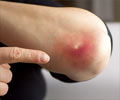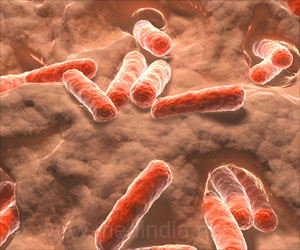The polymer has protein chains in star shapes with 16 or 32 arms that are about 10 nanometres in diameter, much larger than other antimicrobial peptides.

‘SNAPPS can kill bacteria more effectively and selectively than other peptides without damaging the surrounding cells.’





In the US, the Food Drug Administration is pulling anti-bacterial soaps off the market for fear that they are exacerbating antibiotic resistance in some bacteria.
"Our project is to build better alternatives to antibiotics. It kills bacteria in multiple ways. We designed it to break the cell wall apart but we also found it can trigger the cell to kill itself," Lam said. Lam and the team called their polymers SNAPPs: structurally nanoengineered antimicrobial peptide polymers.
A peptide is a short chain of amino acids. Scientists have experimented previously with antimicrobial peptides but have found that while they kill bacteria, they are also hugely toxic to the hosts.
Lam has designed her protein chains in star shapes with 16 or 32 arms that are about 10 nanometres in diameter, much larger than other antimicrobial peptides.
Professor Greg Qiao is Ms Lam's supervisor. He said that what is novel in her design is that their relatively large size means it doesn't seem to affect the healthy cells around the bacteria.
Advertisement
They also tested the efficacy of the polymer in vivo, inside mice, against Acinetobacter baumannii, and the researchers "did not observe any resistance acquisition by A. baumannii".
Advertisement
"The main advantage seems to be they can kill bacteria more effectively and selectively" than other peptides, said Associate Professor Boyer, who is not associated with the research.
Professor Qiao said one of the next steps is to look at how different shapes, such as rings, will work against the superbugs. He also said there will need to be a lot more in vivo research to explore the limits of their toxicity.
Source-Medindia















